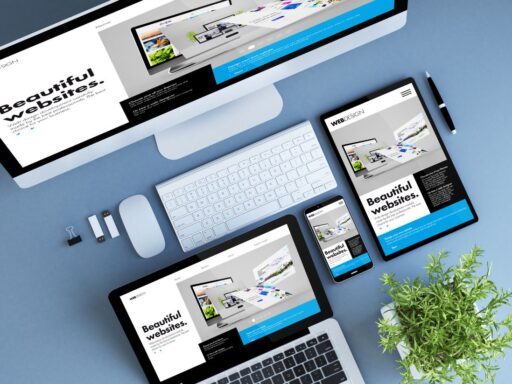That moment of hesitation before sending a quote – it’s a familiar feeling for many of us in the gig world. You’ve poured countless hours into perfecting your skills, yet figuring out your worth can feel like a constant balancing act.
The truth is, so many talented individuals unintentionally undervalue their gigs, leaving potential earnings untapped. But what if you could confidently command the rates you deserve?
This isn’t just about making more money; it’s about recognizing your value and achieving sustainable success. This blog post is your roadmap to setting higher rates for your gigs.
We’ll explore practical, expert-backed strategies that will empower you to not only increase your income but also elevate your professional standing and gain the recognition you’ve worked so hard for. Let’s move beyond the grind and start claiming your true worth.
Alright, let’s lay the foundation for commanding higher rates by truly understanding your market value. This isn’t just about pulling numbers out of thin air; it’s about a deep dive into who you are, what the market looks like, and where you uniquely fit in.
Laying the Groundwork: Understanding Your True Market Value

Before you even think about setting higher rates for your gigs, you need a solid understanding of what you bring to the table and the landscape you’re operating in. It’s like knowing the terrain before you chart a course to a higher peak.
The Self-Assessment Deep Dive: Beyond the Basics
Forget just listing your genre or basic skills. This is about a real heart-to-heart with yourself about your professional journey. What specific wins are you most proud of? Think about those moments when you truly knocked it out of the park for a client.
What was your unique process that led to that success? Did you have a particular way of collaborating, a specific technique you employed, or an innovative solution you offered?
Don’t underestimate the power of client feedback. Dig through those glowing emails and testimonials. What did clients specifically praise about your work? How did your contribution impact their event or project? Did you save them time, increase their engagement, or bring a unique flair they couldn’t find elsewhere?
To truly understand your value, ask yourself these probing questions:
- What specific problems do I consistently solve for my clients?
- What makes my approach or style distinctly different from others in my field?
- What are some tangible results or positive outcomes I’ve delivered in past gigs?
- What unique experiences or training do I possess that sets me apart?
This deep self-reflection isn’t just an ego boost; it’s about identifying the concrete elements that justify your worth and will ultimately support your efforts in setting higher rates for your gigs.
Market Research Like a Pro: Beyond a Quick Google Search
Knowing your worth also means understanding the going rates in your industry and location. But don’t just rely on a cursory online search. Dig deeper!
- Online Platforms: Explore freelance marketplaces and industry-specific job boards to see what similar gigs are paying. Pay attention to the experience level requested and the scope of work involved.
- Industry Associations: These organizations often have salary surveys or rate guidelines for their members. They can provide valuable insights into industry standards.
- Networking: Talk to your peers! Connect with other artists and freelancers in your field – both online and offline. Discreetly inquire about their rates and negotiation experiences. This insider knowledge can be invaluable.
- Entertainment Agents and Consultants: If applicable, these professionals have their finger on the pulse of the market and can offer expert advice on appropriate pricing.
When analyzing market rates, consider these crucial factors:
- Your Experience Level: Are you a seasoned pro with years of experience or just starting out? Your rates should reflect your expertise.
- Project Scope and Complexity: A small, straightforward gig will naturally command a different rate than a large, complex project requiring significant time and resources.
- Client Type: Corporate clients or well-funded organizations often have larger budgets than individual clients or small startups.
- Urgency: Last-minute requests or tight deadlines often warrant higher rates.
Crucially, understand that there’s often a spectrum of pricing. Aim to understand both the average rates – what most people are charging – and the premium rates – what top-tier professionals or those with highly specialized skills can command. Knowing this range will help you position yourself strategically.
Identifying Your Niche and Specializations: The Power of Focus
Imagine being a general practitioner versus a highly specialized surgeon. The surgeon’s focused expertise often allows them to command higher fees. The same principle applies to your gigs.
By focusing on a specific niche or developing unique specializations within your field, you can significantly increase your perceived value and justify premium pricing when setting higher rates for your gigs.
When you become known as the go-to expert in a particular area, clients are often willing to pay more for your specialized knowledge and skills.
Here are a few examples of niche specializations across different creative fields:
- Musician: Instead of just “guitarist,” consider “acoustic fingerstyle guitarist specializing in corporate events” or “vocalist with expertise in vintage jazz for themed parties.”
- Performer: Instead of “actor,” consider “improvisational theatre actor for corporate training” or “children’s party entertainer specializing in science-themed shows.”
Identifying your niche allows you to target a specific audience with tailored marketing, build deeper expertise, and ultimately position yourself as a premium provider, making the conversation around setting higher rates for your gigs much more straightforward.
Alright, now that you have a clearer picture of your market value, let’s talk about how to truly stand out from the crowd and command the rates for your gig that reflect your unique brilliance.
This is where crafting a killer Unique Selling Proposition (USP) comes into play. Think of your USP as your superpower – the special sauce that makes clients choose you over everyone else.
Also Read: Got an Unconventional Gig? Explore Unique Performance Opportunities!
Crafting a Killer Unique Selling Proposition (USP) That Commands Higher Prices

In the bustling world of gigs, simply being talented isn’t enough. To consistently secure higher-paying opportunities and justify the rates for your gig you deserve, you need a compelling USP.
This is the core of what makes you different, better, and the obvious choice for your ideal clients.
Unearthing Your Uniqueness: What Makes You, You?
Forget those generic descriptions like “experienced” or “reliable.” We’re digging deeper. What’s the story behind your craft? What’s your artistic philosophy? What’s your unique approach that clients rave about? This is about tapping into the authentic essence of what you bring to the table.
Consider your journey. What pivotal moments shaped your style? What are the core values that drive your work? Do you have a particularly innovative methodology? Maybe it’s the way you connect with your audience, your meticulous attention to detail, or your ability to bring a fresh perspective to every project.
Here’s a little exercise to get those creative juices flowing and help you pinpoint your unique qualities:
- Brainstorm three things clients consistently praise about your work. Look back at testimonials, emails, and feedback. What are the recurring themes?
- Reflect on your most successful gigs. What did you do differently in those situations? What unique skills or approaches did you utilize?
- Consider your passions and interests outside of your core gig. Do any of these subtly influence your work in a distinctive way?
- Think about your “why.” What truly motivates you in your craft? This underlying passion can often translate into a unique energy that clients recognize and value.
This introspection is key to identifying the genuine differentiators that will make your rates for your gig feel like a worthwhile investment for your clients.
Articulating Your Value Proposition with Power: It’s All About Them
Once you’ve unearthed your unique qualities, the next step is to translate them into compelling value statements. This isn’t just about listing what you do; it’s about clearly articulating the benefits for your clients. How does your uniqueness directly address their needs and desires?
Let’s look at some examples:
- Generic: “Experienced photographer.”
- Value-Driven USP: “I capture the authentic emotion of your event, providing you with timeless images that allow you to relive those precious moments for years to come.” (Benefit: Reliving memories, emotional connection)
- Generic: “Skilled web designer.”
- Value-Driven USP: “I design user-friendly websites that not only look stunning but also convert visitors into loyal customers, helping your business grow.” (Benefit: Increased conversions, business growth)
Notice the shift in focus? It’s not just about the skill; it’s about the positive outcome for the client.
Remember to tailor your USP to different target audiences. A corporate client might value efficiency and professionalism, while an individual seeking a personal service might prioritize creativity and personal connection.
Adjust your language and highlight the benefits that resonate most with each specific group. This targeted approach makes your rates for your gig feel specifically aligned with their needs.
Weaving Your USP into Your Brand Narrative: Consistency is Key
Your USP isn’t a secret weapon you only pull out during negotiations. It should be woven into the very fabric of your brand. This means consistently communicating your unique value proposition across all your marketing materials.
- Your Website: Your USP should be prominently featured on your homepage and “About Me” page.
- Social Media: Your bio and content should consistently reflect your unique approach and the benefits you offer.
- Proposals and Pitches: Tailor your language to highlight how your specific USP aligns with the client’s needs and justifies your rates for your gig.
- Networking: Be prepared to articulate your unique value proposition clearly and concisely in conversations.
A consistent and authentic brand image builds trust and credibility. When your USP is clear and consistently communicated, potential clients understand exactly what makes you the right choice, making them more willing to agree to your rates for your gig. It creates a cohesive message that reinforces your value at every touchpoint.
Alright, you’ve done the groundwork of understanding your value and crafting a compelling USP. Now comes the exciting part – getting paid what you’re worth!
Negotiation can feel a little daunting, but with the right strategies and a confident mindset, you can master the art of securing higher pay. Let’s dive into some effective techniques for setting higher rates for your gigs.
The Art of Confident Negotiation: Strategies for Securing Higher Pay

Negotiation isn’t a battle; it’s a conversation aimed at reaching a mutually beneficial agreement. Approaching it with confidence and preparedness is key to achieving the rates you deserve.
Setting Your Minimum and Ideal Rates: Know Your Numbers
Before you even enter a negotiation, you absolutely must know your numbers. This means establishing both your “walk-away” price – the absolute lowest you’re willing to accept – and your aspirational target – the ideal rate that truly reflects your value.
To determine these figures, carefully factor in:
- Your Costs: Include all your business expenses related to the gig, such as equipment rental, software subscriptions, travel, materials, and even administrative time.
- Your Time: Calculate the estimated hours you’ll spend on the project, including preparation, execution, and any follow-up. Value your time appropriately. What’s your desired hourly rate?
- Desired Profit Margin: This is the income you want to earn above your costs and time. Be realistic but also value your expertise.
Knowing these numbers empowers you to negotiate from a position of strength. You’ll understand your bottom line and have a clear goal in mind.
Mastering Communication and Active Listening: The Art of Connection
Effective negotiation is deeply rooted in strong communication skills. Approach each discussion with confidence, clarity, and professionalism.
- Initiating the Conversation: Start by expressing your enthusiasm for the opportunity and briefly highlighting relevant achievements that make you a great fit. This sets a positive tone.
- Presenting Your Rates: Be direct and confident when stating your rates. Avoid wishy-washy language. You can say something like, “Based on my experience and the scope of this project, my standard rate for this type of gig is [your rate].”
- Justifying Your Value: Don’t just state your price; explain why it’s justified. Refer back to your unique skills, experience, and the specific benefits you bring to the client (as outlined in your USP). For example, “My rate reflects my [number] years of experience in [your niche] and my track record of delivering [specific positive outcomes].”
- Active Listening: Pay close attention to the client’s needs, concerns, and budget constraints. Ask clarifying questions to ensure you fully understand their perspective. Sometimes, their hesitation isn’t about your rate itself but about a specific aspect of the project or their own internal limitations.
Creative Negotiation Tactics Beyond the Hourly Rate: Think Outside the Box
Don’t get stuck on just an hourly rate. Explore alternative compensation models that might better align with the project and your value:
- Value-Based Pricing: Charge a flat fee based on the perceived value and the results you’ll deliver, rather than just the time spent. This works well when you can clearly demonstrate a significant return on investment for the client.
- Project Fees: For well-defined projects, a fixed project fee can provide more certainty for both you and the client. Factor in potential contingencies when setting this fee.
- Royalties or Performance-Based Pay: In some creative fields, you might negotiate a percentage of sales, ticket revenue, or other performance metrics.
- Negotiating Additional Benefits: If the client’s budget is tight, explore other valuable additions to the compensation package, such as travel expenses, accommodation, prominent credit, future collaboration opportunities, or access to their network.
Handling Objections and Budget Constraints Professionally: Finding Solutions
It’s inevitable that you’ll encounter clients who push back on your rates or have budget limitations. Here’s how to handle these situations gracefully:
- Listen Empathetically: Acknowledge their concerns and try to understand their perspective. Avoid getting defensive.
- Reiterate Your Value: Briefly restate the unique benefits you offer and why your rate is a fair reflection of that value.
- Explore Tiered Packages: Offer different levels of service or deliverables at varying price points. This allows clients with tighter budgets to still work with you, albeit potentially at a reduced scope.
- Adjust the Scope of Work: If the budget is firm, discuss whether the project scope can be adjusted to fit within their limitations while still allowing you to deliver quality work at your minimum acceptable rate. Be clear about what will be included and excluded at the lower price point.
- Know When to Walk Away: If a client consistently undervalues your work or tries to pressure you into accepting an unreasonably low rate, be prepared to politely decline the opportunity. Sometimes, the best negotiation is knowing when to say no and wait for a client who truly appreciates your value.
Mastering these negotiation techniques will empower you to confidently advocate for your worth and secure the higher rates you deserve for your valuable gigs.
Alright, you’ve honed your self-awareness, crafted a killer USP, and sharpened your negotiation skills. Now, let’s talk about one of the most powerful tools in your arsenal for commanding higher rates: social proof. Think of it as letting your satisfied clients do the talking – and convincing – for you.
Leveraging Social Proof: Turning Praise into Higher Profits

In the gig world, trust hinges on positive past experiences. Strategic social proof sways potential clients to accept your rates.
The Power of Testimonials and Endorsements: Let Others Validate You
Social proof works because people trust peer recommendations over self-promotion. Testimonials showcase your skills and impact, reducing risk for new clients and justifying your rates for your gig.
- Actively Ask: Request testimonials after successful gigs.
- Provide Prompts: Guide clients on what to highlight.
- Make it Easy: Offer various feedback methods.
- Showcase Publicly: Feature testimonials on your website and proposals.
- Seek Platform Endorsements: Encourage reviews on professional sites and social media.
Testimonials come in written, video, and audio formats, each adding unique value.
Building a Strong Online Presence and Reputation: Your Digital Credibility
Your online presence is key social proof. A strong reputation builds trust, supporting your rates for your gig.
- Engage on Social Media: Show your expertise and build a following.
- Encourage Website Reviews: Positive feedback influences decisions.
- Curate a Professional Portfolio: Visually demonstrate your skills.
- Maintain Consistent Branding: Build recognition and trust.
A strong online presence is a virtual endorsement, justifying your pricing.
Showcasing Success Stories and Case Studies: Demonstrating Real Impact
Beyond simple praise, success stories detail the problems you solved and the positive outcomes achieved.
- Document Results: Track project details and quantifiable achievements.
- Craft Compelling Narratives: Highlight your skills and the benefits you provided.
- Share Strategically: Feature case studies on your website and proposals.
By showing tangible results, you prove your value, making your rates for your gig a clear investment. Seeing your impact firsthand builds client confidence.
You can also read our article “Unlock the Full Potential of Your Event with Digital Ticketing Solutions”
Conclusion
You’ve journeyed through the essential steps to take control of your earnings. From deeply understanding your unique value and researching the market, to crafting a compelling USP and mastering the art of confident negotiation, you now possess the tools to command higher rates.
Remember, setting higher rates for your gigs isn’t just about the money; it’s a powerful act of self-respect and a recognition of the dedication and expertise you bring to every project.
By consistently showcasing your value through a strong online presence and the voices of satisfied clients, you build a foundation for long-term financial success and professional growth. It’s time to implement these strategies, believe in your worth, and confidently step onto the path of earning what you truly deserve. Start today, and watch your income – and your confidence – soar.
Alright, let’s tackle some of the common questions that often pop up when artists and freelancers are looking to level up their earnings.
VIII. FAQ Section: Your Burning Questions Answered
Navigating the world of setting your rates can bring up a lot of questions. Here are some of the most common ones, along with insightful answers to help you on your journey to higher earnings.
How do I figure out my initial starting rate, especially if I’m new?
When you’re starting out, research is key. Look at what others with similar skills and experience levels in your local market are charging for comparable gigs. Don’t just look at the lowest prices; consider the average and aim for a rate that reflects your developing skills while still being competitive. Factor in your basic costs (even if they’re minimal initially) and a modest value for your time. As you gain experience and build a portfolio, you can steadily increase your rates.
What are some concrete tips for negotiating rates effectively?
Be prepared to articulate your value clearly and confidently. Know your minimum acceptable rate beforehand. Listen actively to the client’s needs and budget, and be open to finding mutually beneficial solutions. Don’t be afraid to counter offers, but always remain professional. Highlight your unique skills and past successes to justify your asking price. Remember, negotiation is a conversation, not a confrontation.
I’m worried about losing gigs if I raise my rates. How can I overcome this fear?
Focus on consistently delivering exceptional quality and building a strong reputation. When you provide outstanding value, clients are often willing to pay more. Communicate any rate increases professionally and provide advance notice to repeat clients. Highlight any new skills or services you’re now offering that justify the increase. Remember, attracting clients who value quality over the lowest price is a sign of a sustainable business.
What if a potential client has a very limited budget?
Be flexible but also value your worth. Explore options like offering scaled-down versions of your services, shorter engagement times, or focusing on the core needs of the client. Clearly outline what’s included at the lower budget. If the proposed budget is significantly below your minimum, it might be a sign that this particular gig isn’t the right fit for you. Politely decline while keeping the door open for future collaborations if their budget allows.
How often should I consider raising my rates?
There’s no one-size-fits-all answer, but generally, consider reviewing your rates at least once a year. Factors to consider include your increased experience, new skills acquired, inflation, and changes in market demand. If you consistently find yourself fully booked or turning down work, it’s a strong indicator that you might be able to raise your rates.
What if a client questions my rates? How should I respond?
Be prepared to confidently justify your rates by highlighting your experience, unique skills, the value you provide, and positive client testimonials. You can say something like, “My rate reflects my [number] years of experience in [your niche] and my proven track record of delivering [specific positive outcomes]. Many of my clients have found that my expertise in [specific area] has resulted in [quantifiable benefit].”
How can I build confidence in asking for higher rates?
Confidence comes from knowing your worth. This involves doing your research, understanding your unique value proposition, and consistently delivering excellent work. Practice articulating your value and your rates out loud. Celebrate your successes and remember the positive feedback you’ve received. The more you value yourself and your work, the more confidently you’ll be able to ask for and receive higher pay.
Are there any red flags to watch out for when discussing rates with a client?
Be wary of clients who are overly focused on price and don’t seem to value the quality of your work. Also, watch out for those who are unwilling to discuss budget openly or try to pressure you into significantly lowering your rates without a clear justification. Trust your gut feeling; sometimes, a lower-paying gig with a difficult client isn’t worth the hassle in the long run.






